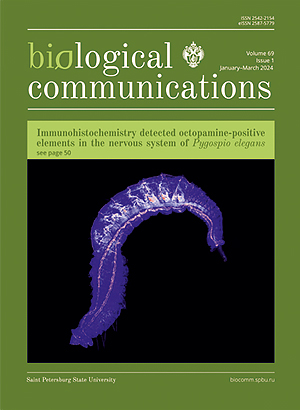Circulating biomarker profile changes in obese patients undergoing bariatric surgery
DOI:
https://doi.org/10.21638/spbu03.2024.103Abstract
Bariatric surgery (BS) remains the most effective treatment for morbid obesity (MO). It`s relevant to identify biomarkers for predicting the outcome of BS in patients with MO. The aim of the study was to determine the dynamical change in the biomarker levels in patients undergoing BS and apparently healthy donors. Serum and plasma samples were obtained from 66 patients, of which 26 patients with MO (aged 26–72 years) underwent BS, and 40 healthy donors, at the age of 56 ± 10.3 years. Patient samples were obtained the day before BS (first group), 3–7 months after BS (second group), and 7 or more months after BS (third group). Analyte concentrations were determined by multiplex immunoassay on the xMAP platform (Luminex). Spearman’s rank correlation was used. The nature of analyte variability was described by building multiple regression models. In the patients compared with healthy controls, differences in the levels of resistin, PAI1, MCP1, GLP1, leptin, FGF23, adiponectin, adipsin were observed. In patients after BS, the levels of resistin, ANGPTL6, FGF21, and leptin changed. In patients over 55 years old compared with younger patients, differences for total ANGPTL4, amylin, and pancreatic polypeptide were observed. Differences in levels of glucagon, resistin, GLP1 and leptin were noted between men and women. The dynamics of the levels of adipokines and incretins indicates biochemical changes in patients after BS compared with healthy persons.
Keywords:
obesity, biomarkers, bariatric surgery, weight loss, body weight
Downloads
References
Downloads
Published
How to Cite
License
Articles of Biological Communications are open access distributed under the terms of the License Agreement with Saint Petersburg State University, which permits to the authors unrestricted distribution and self-archiving free of charge.





